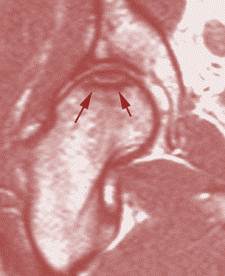A Modern Greek Tragedy-Small Amounts of Steroid Use can Lead to Osteonecrosis
I’ve blogged before about how corticosteroids can cause osteonecrosis, a disease where the bone can quickly turn to mush. How does this happen? These drugs hurt the normal adult stem cell population responsible for maintaining healthy bone. In some patients these effects are more pronounced than others. Despite this, steroids are still widely used. Some of this is because they are so darned effective at reducing swelling and some because there is still little acknowledgement by physicians that these drugs can cause serious side effects in the wrong patients. This week I followed up on a patient that tragically illustrates this issue. This gentleman is in his late 30’s and had a history of esophagitis. I had seen him for other spinal injuries and when he returned after several years it wasn’t to talk about his neck, but his hips. Unknown to me, he was taking a nasal inhaled steroid and swallowing this to help the swelling in his esophagus. He had been doing this for about 6 years when he began to get rapidly worsening hip pain. He was eventually diagnosed with osteonecrosis (also known as AVN) of the hip thought secondary to these oral steroids, The scary part of this story is that the type of steroid he was taking were relatively low dose, about 100 micorgrams. Usually milligram steroids are considered high risk for osteonecrosis (1,000 times more). I remember arguing with my son’s pediatrician about this issue.He wanted to start him on these low dose steroids for mild asthma claiming that they were very safe. I knew better and thankfully vetoed that one. How could such a low dose lead to osteonecrosis? Well, the body uses nanogram steroid doses naturally, or about 1,000 times less than this amount. Visually, if the height of the amount the body is used to seeing is as tall as a 12 inch ruler, the height of a microgram dose is as tall as the empire state building. We will be seeing this patient to inject a bone marrow stem cell fraction into his hip onsteonecrosis lesion in hopes of healing it. We’ve treated patients like this before with good success as long as we can catch them early (this gentleman is currently ARCO stage 1-2). This hip osteonecrosis stem cell procedure isn’t a technique we pioneered, it’s been around for many years with some surgeons also starting to offer a surgical version with CORE decompression. The upshot? Stay away from steroids if you can, especially long-term daily use-no matter the dose.

If you have questions or comments about this blog post, please email us at [email protected]
NOTE: This blog post provides general information to help the reader better understand regenerative medicine, musculoskeletal health, and related subjects. All content provided in this blog, website, or any linked materials, including text, graphics, images, patient profiles, outcomes, and information, are not intended and should not be considered or used as a substitute for medical advice, diagnosis, or treatment. Please always consult with a professional and certified healthcare provider to discuss if a treatment is right for you.
